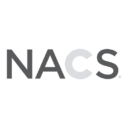Is Walmart’s Real-Time Payments Offer Going to be a Market Mover?
It was recently announced that Walmart will be working with Fiserv to implement real-time payments for their customers using Fiserv’s […]
Capitalize on the Benefits of Payment Orchestration
As the complexity of managing multiple payment channels and services continues to evolve, the concept of payment orchestration has garnered increasing attention in the merchant community. Despite this growing interest, there has been a notable lag in actual implementation of orchestration capabilities. Here we explore what payment orchestration is, why it’s relevant to merchants, and how to overcome the challenges to effective orchestration.
When Should a Merchant Be Merchant of Record?
The biggest benefit to becoming the Merchant of Record is the opportunity to optimize payment operations and standardize the customer experience. As technology has evolved, so has the need to optimize transaction flows across channels of commerce, control costs, and improve resiliency.
Personalization and Real-time Messaging
The breadth of benefits that personalization can offer range from increasing customer satisfaction by tailoring experiences and product recommendations to elevating conversion rates by presenting relevant content, offers, and recommendations.
How to Approach Implementing Autonomous Checkout
Though autonomous checkout has demonstrated clear benefits to those who implement it well, the implementation doesn’t come without its challenges. One of the biggest pitfalls we see in self-checkout implementations is the propensity to treat this new technology as we would treat any other POS terminal.
Operational Integrity more vital than ever
As technology is pervasive at retail locations supporting more offers and consumer engagement options, the resiliency of this technology must be monitored and assured. Making sure that products are available, priced correctly, and that consumers can transact with prescribed offers, earn loyalty and use desired payment is critical to the business.
What is a Payment Account Reference (PAR) and why does it matter to merchants?
In recent years, the concept of a Payment Account Reference (PAR) has emerged as a way of identifying customers without […]
Want to stay in touch? Subscribe to the Newsletter















